How to Create a CRM Strategy to Drive Business Growth in 2024
Casey O'Connor
A CRM strategy is a team’s or organization’s plan to increase their win rate, generate more revenue, and increase customer satisfaction using the various capabilities built into their CRM software.
While just about every sales team relies on a CRM platform to store and manage customer contact data, far fewer organizations create tangible strategies that guide sellers and marketers on how to use its features to their fullest extent.
Without a well-planned CRM strategy, most platforms are significantly underused.
In this article, we’ll go over everything you need to know about CRM strategies, including what they are, why they’re so important, and how to make one.
Here’s what we’ll cover:
- What Is a CRM Strategy?
- Why Is a CRM Strategy Important?
- How to Create a CRM Strategy
- 4 CRM Strategies for 2023
What Is a CRM Strategy?
A CRM strategy is a business’s plan to leverage the data and process capabilities of their CRM system to deepen customer relationships, improve the sales process for both buyer and seller, generate more revenue, and become more profitable.
Virtually all salespeople have at least some experience with CRM software. Even without a detailed strategy, CRM platforms are able to:
- Store and manage customer data
- Track customer interactions
- Create transparency and accountability around how deals are progressing
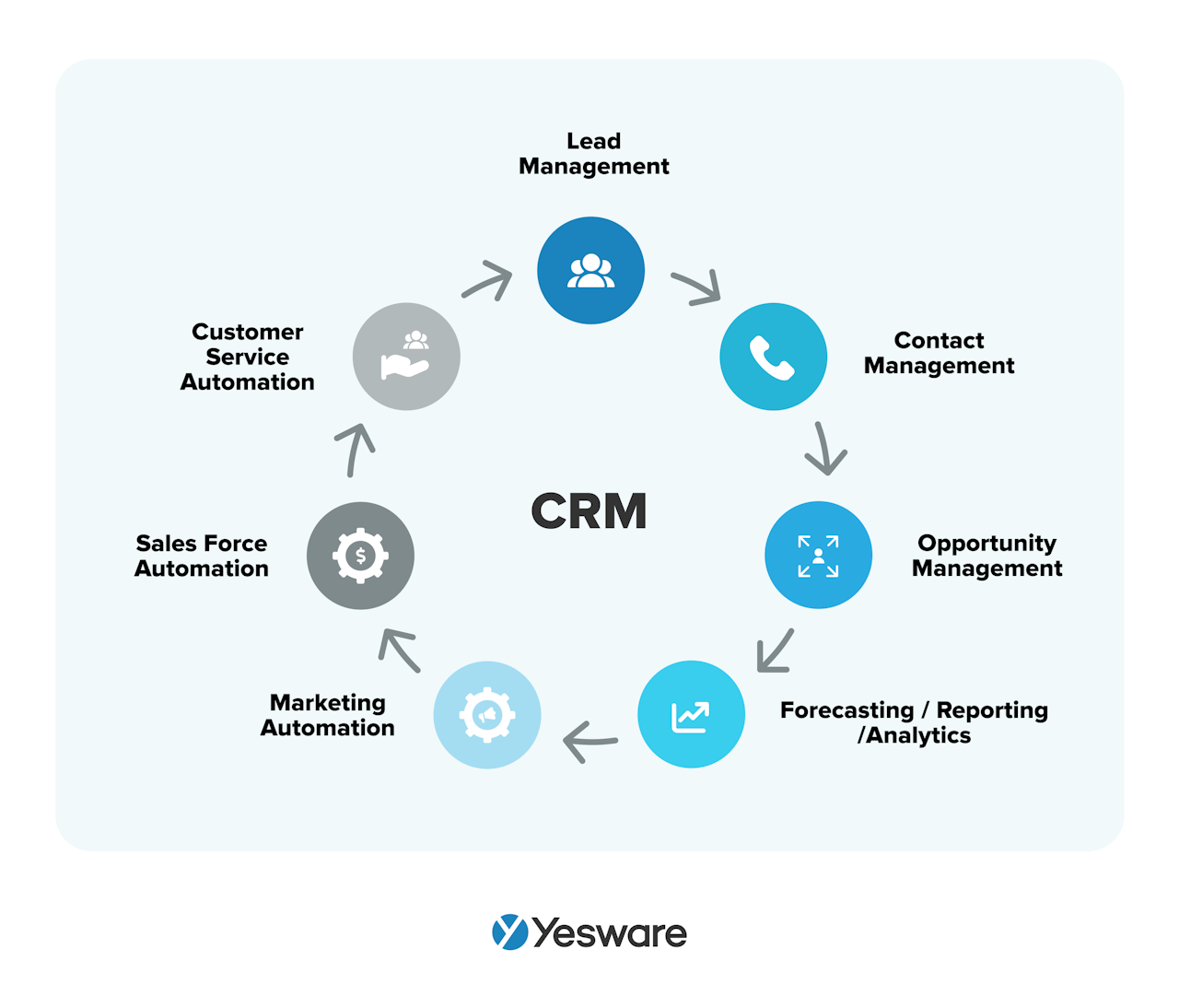 One of the biggest benefits of a CRM system is that it manages to accomplish all of these tasks in a single streamlined interface.
One of the biggest benefits of a CRM system is that it manages to accomplish all of these tasks in a single streamlined interface.
All of the software’s built-in capabilities become significantly more powerful when a CRM strategy is applied to how they’re used.
It’s important to note that an impactful CRM strategy is about much more than the CRM software itself. The CRM strategy should involve people from across the sales, marketing, and customer service teams, who leverage the data from CRM platforms to create personalized, multi-touchpoint campaigns with tailored content.
A great CRM strategy should help remove some of the transactional overtones that sometimes occur throughout the sales process, and instead make it as customer-centric as possible.
A CRM strategy answers the question: How can I use my CRM system to drive my business forward?
Why Is a CRM Strategy Important for Business?
Most sales teams would tell you that a capable and reliable CRM platform is a non-negotiable tool for a successful organization.
Surprisingly, though, most of those sales teams are unfortunately mismanaging the software. In fact, Harvard Business Review estimates that CRM adoption/implementation failure may be as high as 90%.
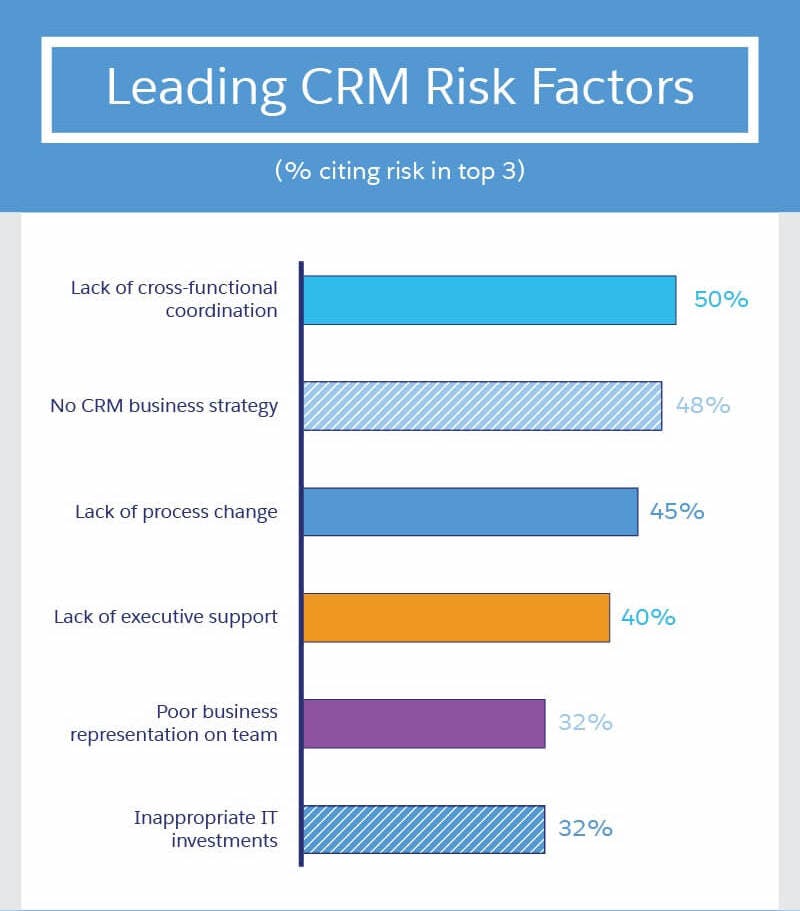
It’s not that salespeople don’t know how to use the technology — it’s usually easy enough to input lead/customer data and log interactions or follow-up status.
The issue usually stems from poor application of the tool.
With customers today expecting much different — think: more personalized — support than ever before, salespeople need to know how to leverage the insights provided by their CRM to strategically grow their business through increased efficiency in the sales cycle and improved customer relationships.
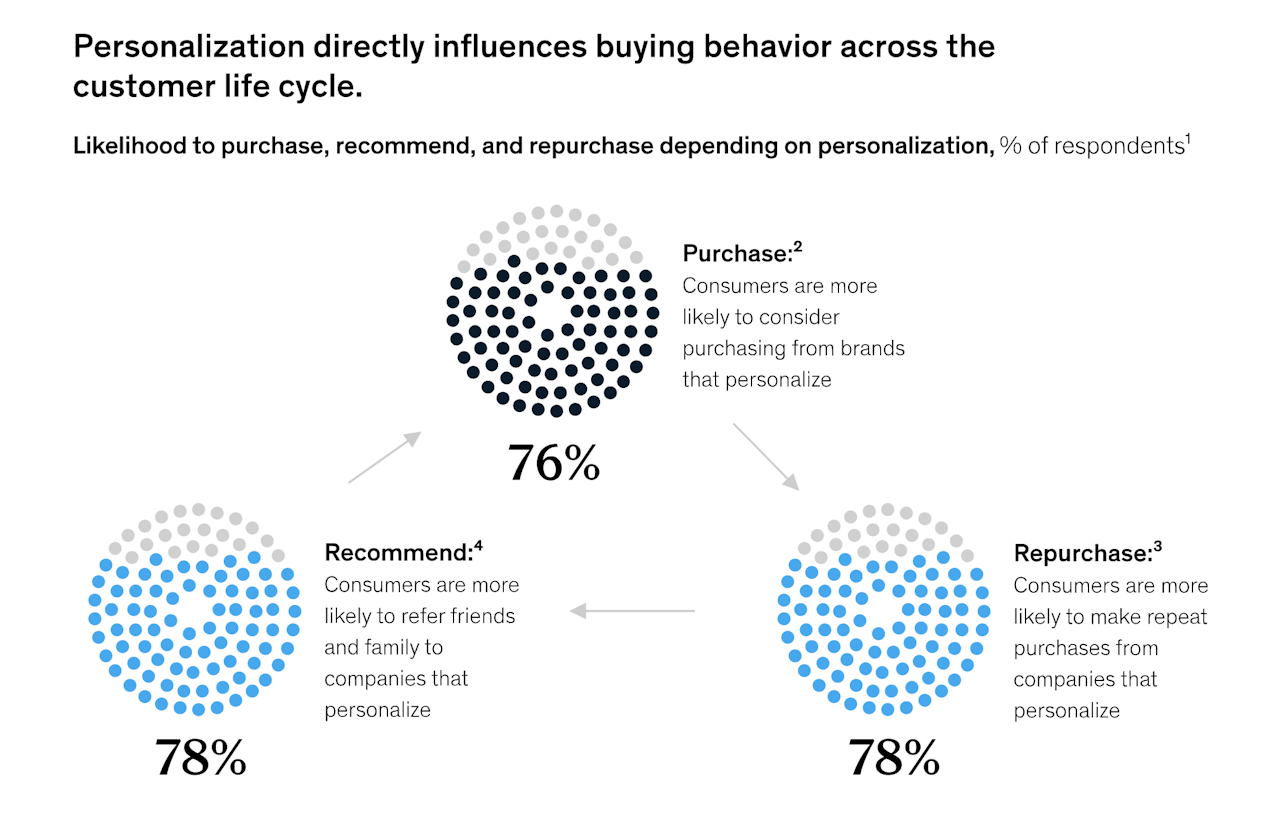
A CRM strategy helps sales teams anticipate the needs of both buyer and seller through the sales process so that both parties — especially the customer — feel satisfied at every stage.
Creates a More Efficient Sales Process
A CRM strategy can help marketers and salespeople use their CRM platform to optimize their sales activities for each and every lead in the pipeline. Sales and marketing can align to determine a system for scoring and prioritizing leads; the CRM software can then help them maintain and present that system.
A well-planned CRM strategy can also help salespeople track each deal as it progresses through the sales funnel and deliver clear, data-driven insight that helps reps know exactly what to do next for each lead.
Implementing a CRM strategy will also improve general efficiency by decreasing or eliminating erroneous or outdated records, unintended delays in communication, and lost opportunities due to poor follow-up strategy. All of this help create better, more accurate sales forecasts.
Improves the Customer Experience
A customer-centric CRM strategy helps sales reps build deeper, more intentional relationships with prospects and customers. When reps take full advantage of all of the data and insight that can be leveraged from a capable CRM platform, they have a better understanding of their customer and clearer, more thorough customer profiles.
With improved customer understanding, a CRM strategy can enable sales reps to personalize each of their touchpoints and communication efforts so that they can provide each lead with exactly what they need throughout each stage of the buyer’s journey. 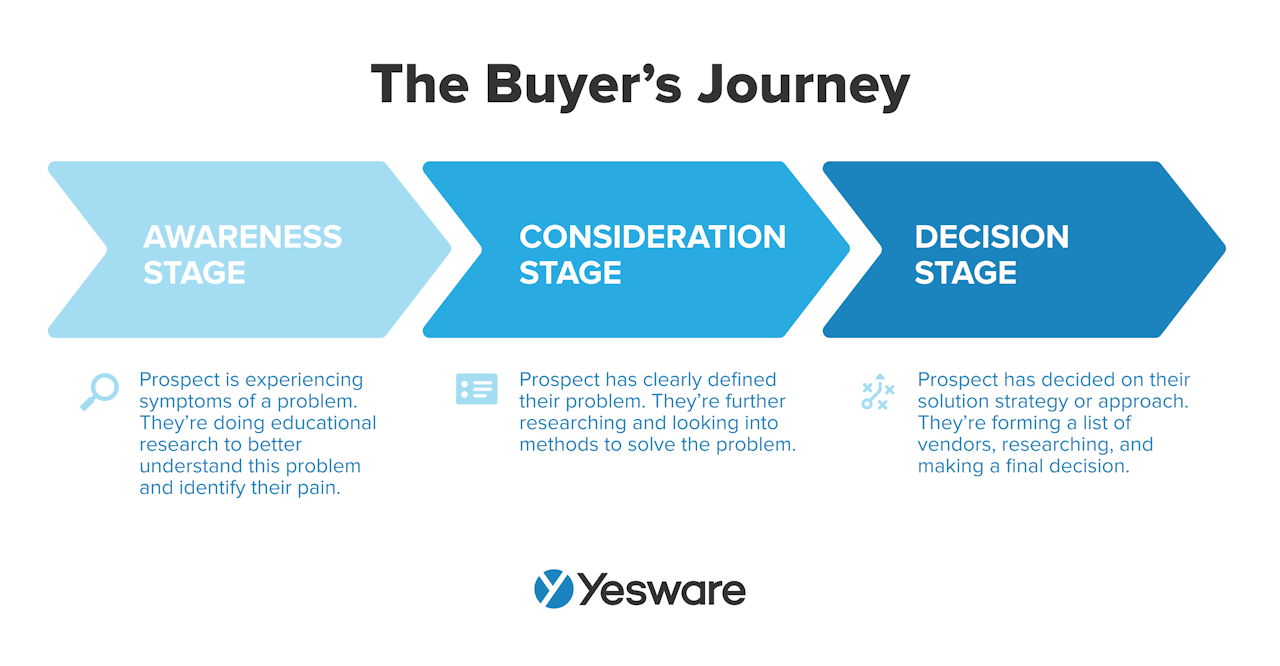 This helps customers feel heard and understood, which ultimately leads to more closed deals, better retention and referral rates, and improved brand loyalty.
This helps customers feel heard and understood, which ultimately leads to more closed deals, better retention and referral rates, and improved brand loyalty.
Generates Tangible Results
Marketing and sales teams that adhere to a CRM strategy see their work pay off through improvements in a few key sales metrics:
- Decreased customer acquisition costs (CAC)
- Increased customer lifetime value (LTV)
- Shorter and more profitable sales cycles
All of these improvements, of course, will ultimately lead to increased revenue and overall business growth.
How to Create a CRM Strategy
Much like any sales strategy, there is no one-size-fits-all formula when it comes to creating a CRM strategy. The specifics of your plan will depend on the size of your company, your budget, and your team’s or organization’s specific goals.
That being said, there is a basic framework of steps that teams can follow in order to create their own CRM strategy.
1. Compile Baseline Data
The first thing any sales or marketing will want to do before creating a new CRM strategy is to run an audit on external and internal processes related to sales.
This should be as thorough as possible. Study your team, their performance, and their processes, but also study your competition, your USP and positioning, and the overall market. It’s a good idea, too, to perform a complete SWOT analysis.
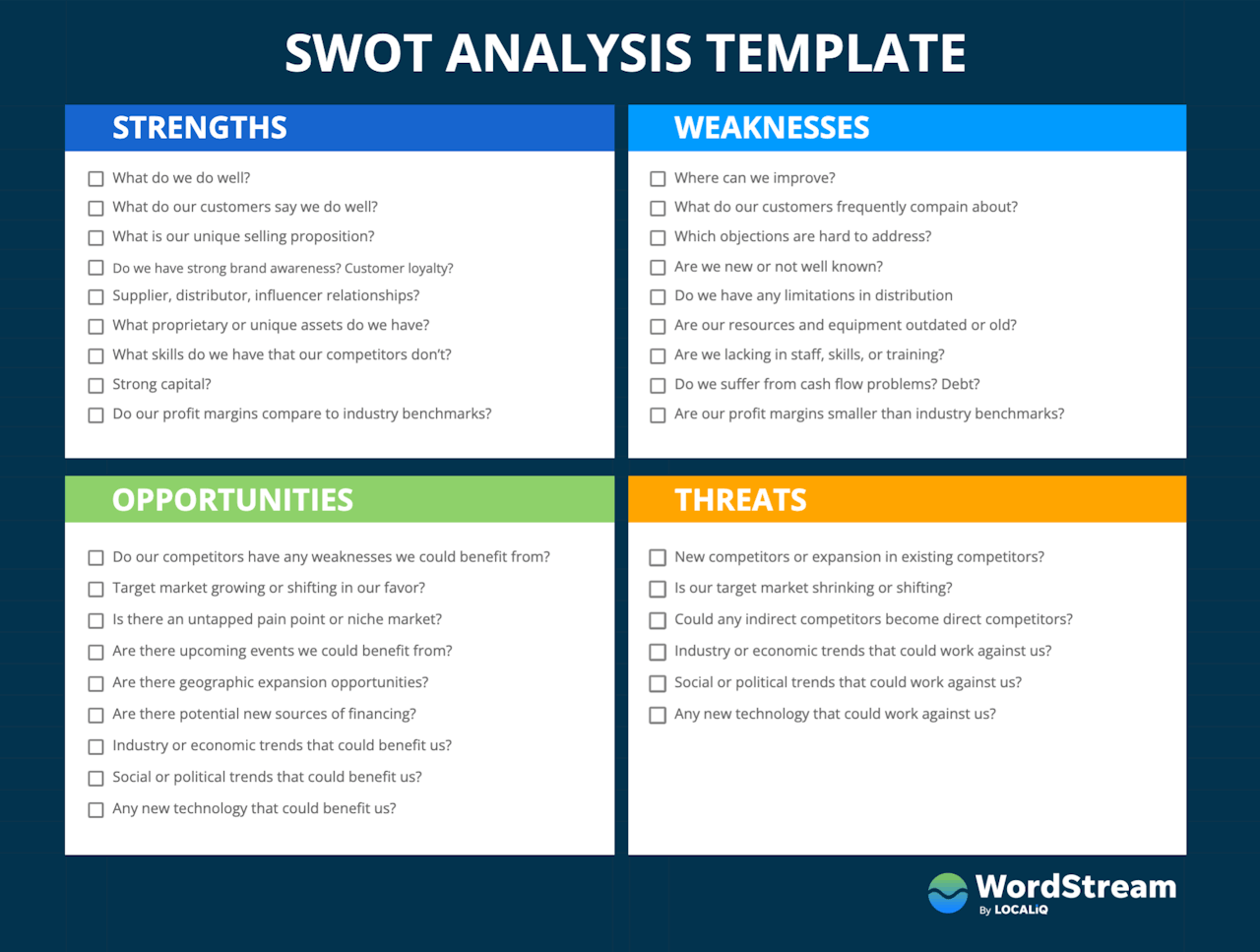
This will give you a good sense of where your resources are currently being spent, and whether you have enough to dedicate to creating and implementing a new CRM strategy.
2. Outline Your Current Sales Process and Target Buyer
Next, it’s time to clearly outline your current sales process. Outline all of the various people, processes, decision points, and data collection processes that define the way your team makes sales.
During this step, it’s also important to highlight your target market. Create or refine thorough ideal customer profiles (ICPs) and buyer personas, as well as their unique version of the buyer’s journey.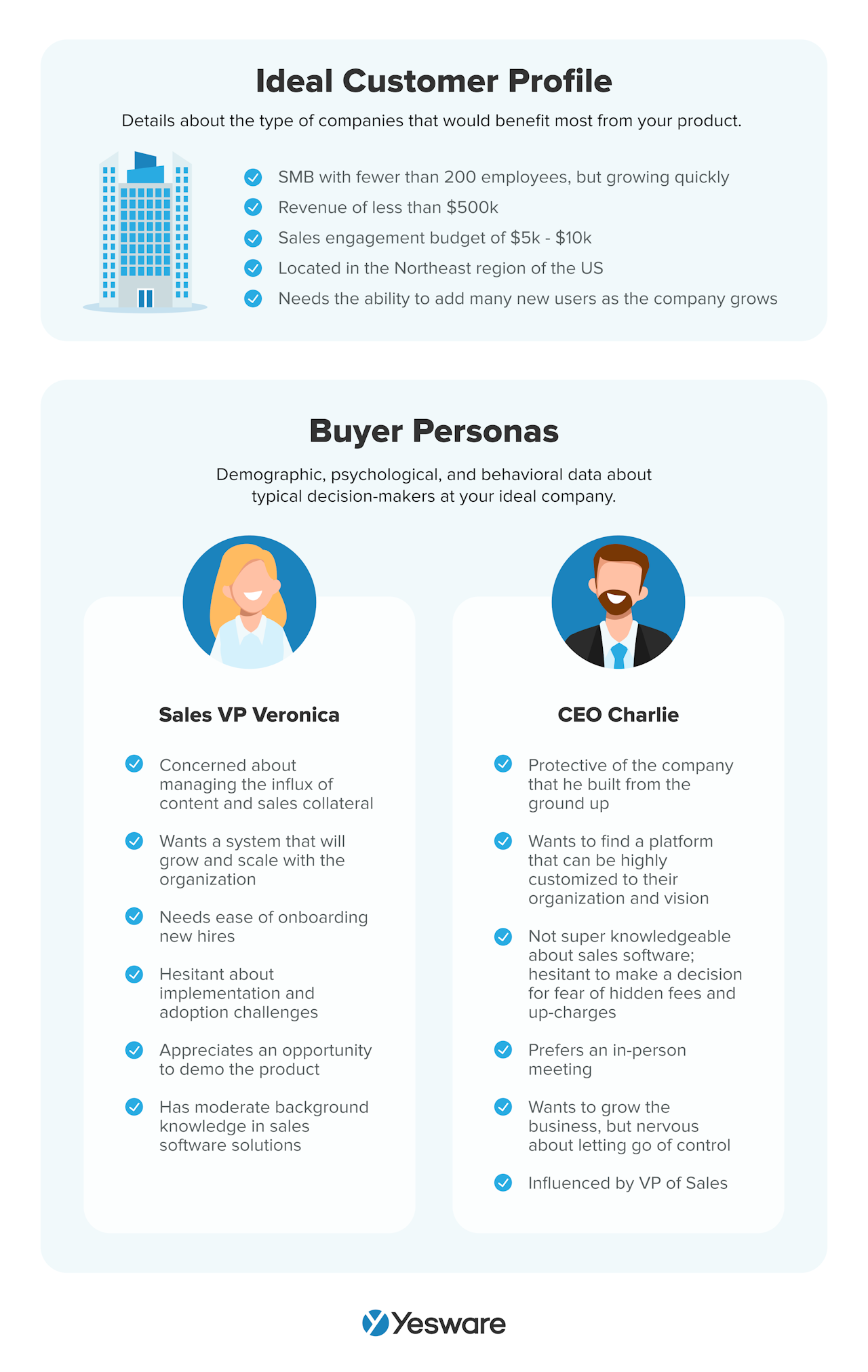 This is additional foundational data that will help clarify the specifics of your CRM strategy.
This is additional foundational data that will help clarify the specifics of your CRM strategy.
3. Define Your CRM Goals
Once you’ve gathered your baseline data, it’s time to start visualizing all the ways you’d like to leverage your CRM system to grow your business.
Sales and marketing teams should work together to create SMART goals that clearly explain what you hope to achieve — and how and when you aim to do so — with your CRM strategy.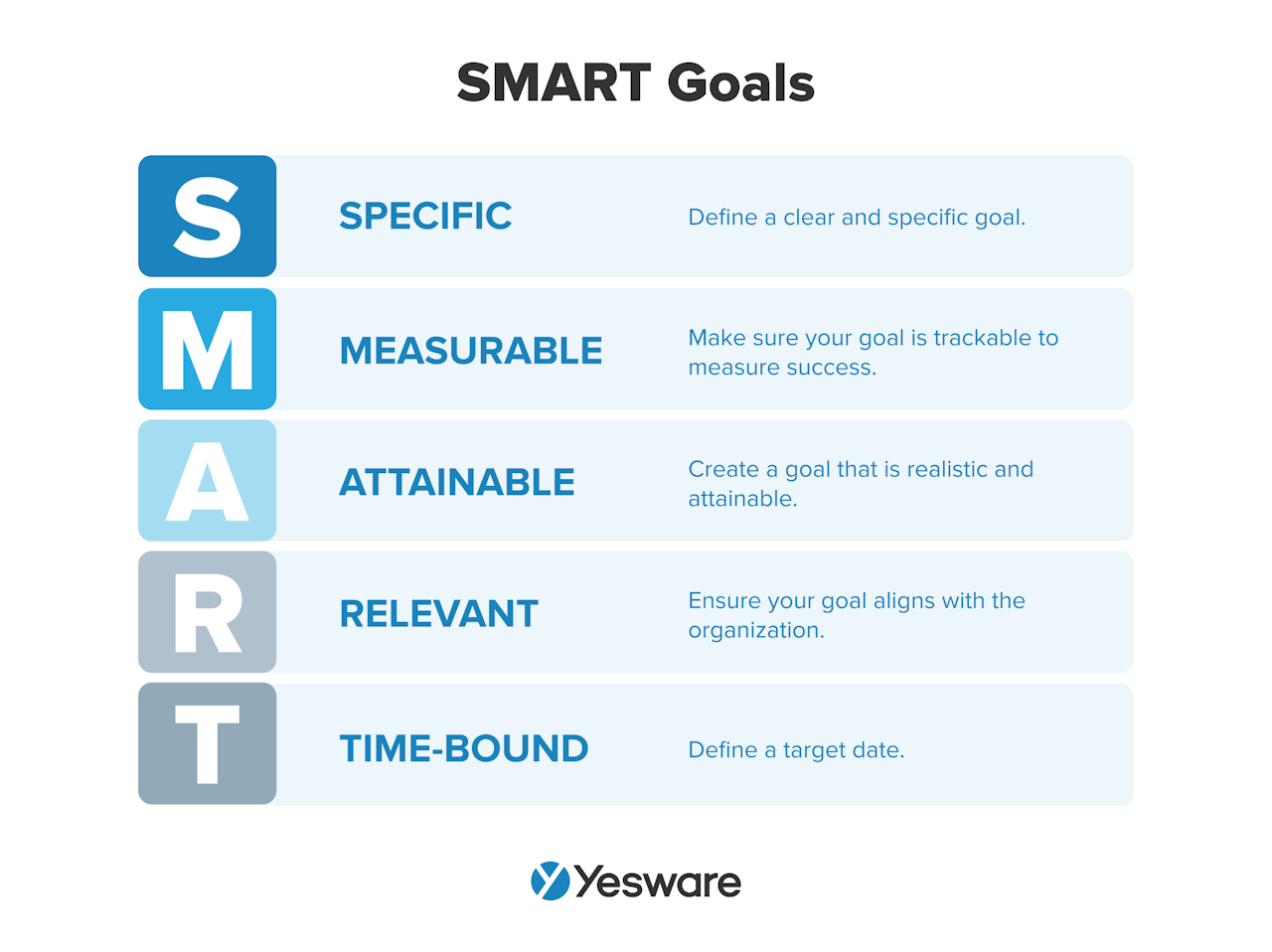 Remember that SMART goals need to meet very specific criteria. They must be: specific, measurable, attainable, relevant, and time-bound.
Remember that SMART goals need to meet very specific criteria. They must be: specific, measurable, attainable, relevant, and time-bound.
As you work with your teams to create SMART goals, think about your CRM strategy from all angles. It’s possible you may have several goals as it relates to your CRM platform. Some common themes include goals around:
- Increased customer satisfaction
- Increased productivity
- Increased employee and/or customer retention
- Increased lead conversion
- Decreased bounce or churn rates
Each of these KPIs are connected to how effectively you use your CRM, and each can be improved with a solid CRM strategy.
4. Define CRM Usage
With your goals in place, it’s time to specifically spell out how you plan to use your CRM to achieve them. List out the features and components of your CRM platform that you’ll use to deploy your strategy, and clearly define expectations around how to track and manage CRM data.
Additionally, your entire organization needs to be trained on how to use the software and the expectations around data collection and management.
Keep lines of communication open as you go through the training process. One of the main goals of implementing a CRM system and strategy is to create transparency, so it’s important that everyone on the team is in the loop about how and when they’ll be expected to use the tool.
5. Segment Your Audience and Create Personalized Strategies
Once the logistical components of your CRM strategies are finalized, your team can now visualize how it will look in action.
Use what you know about your various buyer personas to segment your audience and create personalized marketing campaigns that are most likely to resonate with each group. In the next step, you’ll direct the CRM to orchestrate and track the various campaigns.
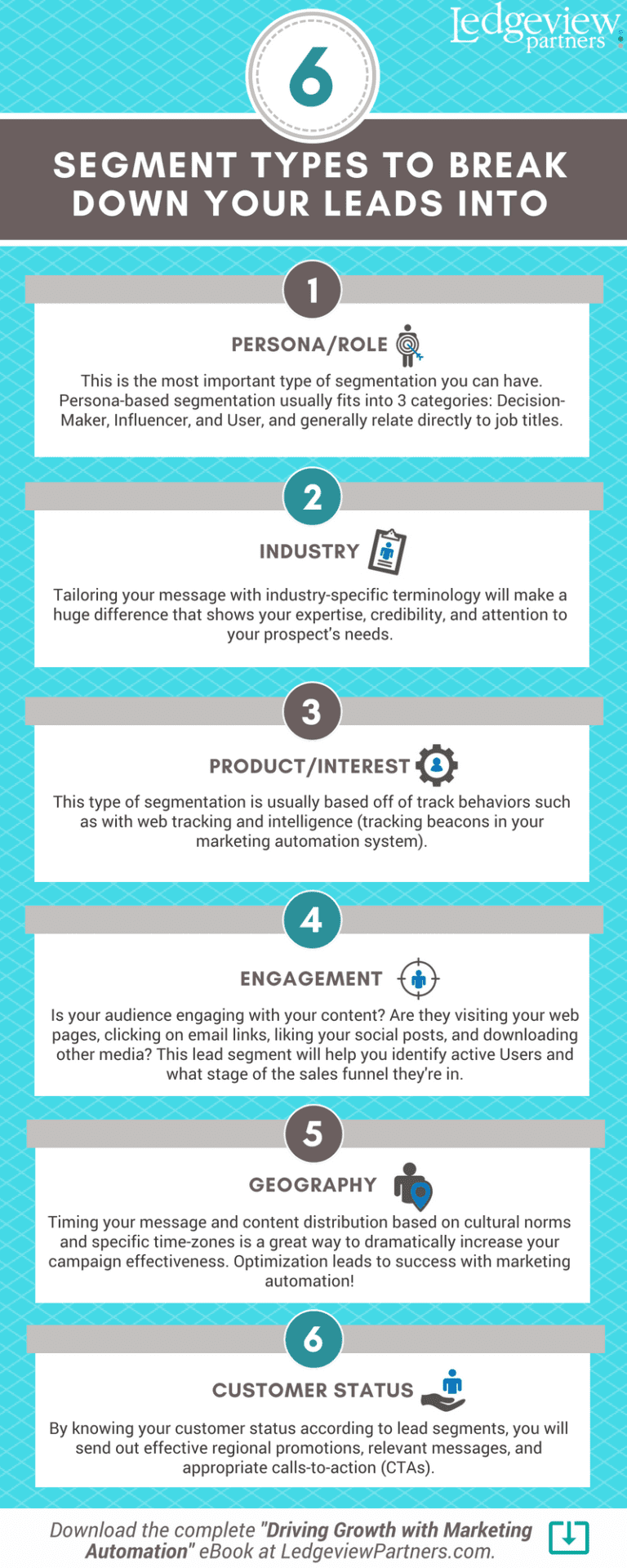
Remember to use your CRM system to its fullest during this step — it’s chock full of customer data points that can help sales and marketing design high-quality, personalized outreach strategies.
6. Automate Everything
With lead prioritization and content strategy complete, the next big piece of the CRM strategy is automation.
One of the most important features of any CRM system is its automation capabilities. The software you choose should be able to simultaneously deploy, manage, track, and follow up with many multi-touch outreach campaigns, regardless of the level of complexity, with ease.
Tip: Make sure you have all the tools necessary in your technology stack with the free ebook below.
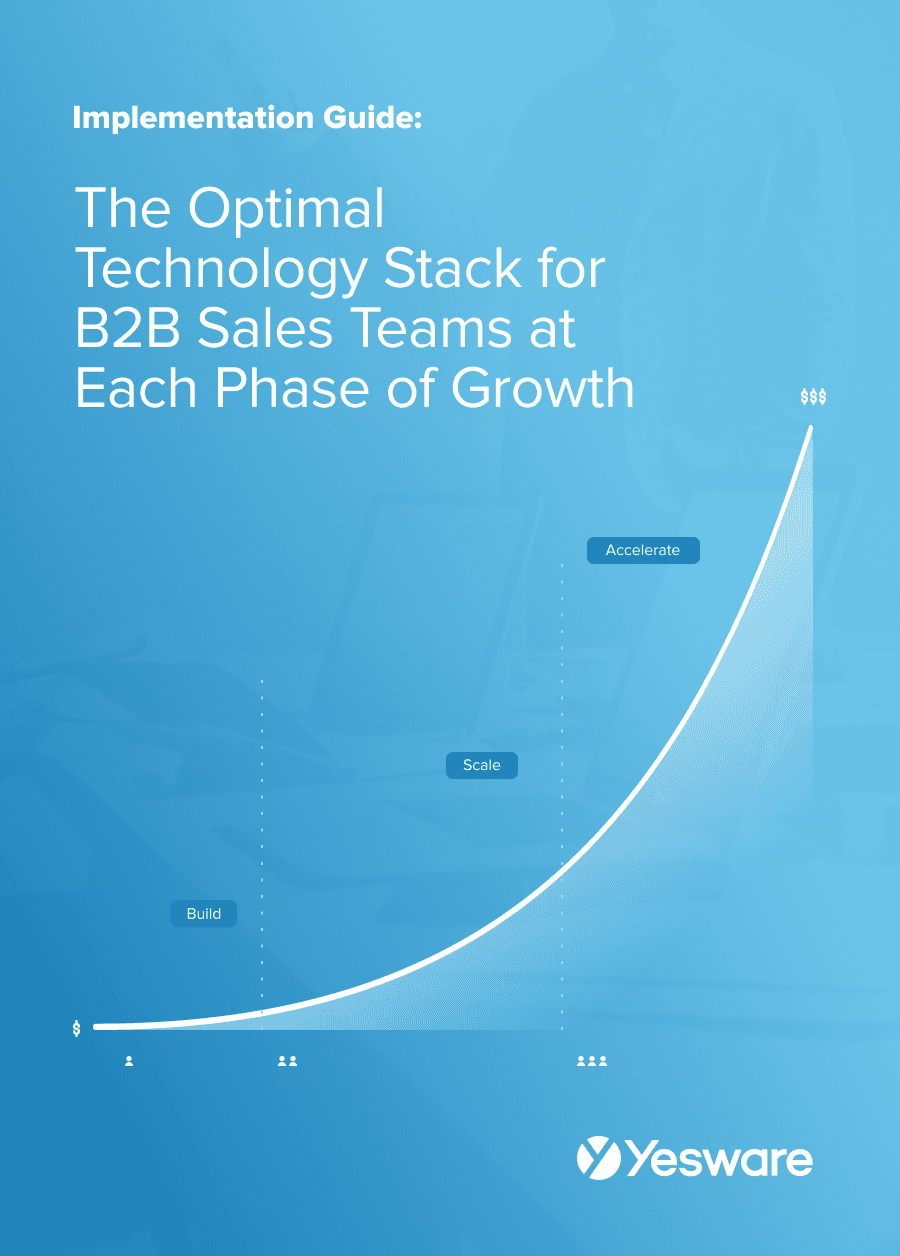 The Optimal Technology Stack for B2B Sales TeamsUsing data from the most successful business-scaling models, we designed a blueprint for the exact technology your business needs at each phase of growth.
The Optimal Technology Stack for B2B Sales TeamsUsing data from the most successful business-scaling models, we designed a blueprint for the exact technology your business needs at each phase of growth.
7. Track Campaign Performance
No matter how effective your CRM strategy might be, it won’t help you grow your business unless your team regularly studies its impact on your performance, and optimizes accordingly.
4 CRM Strategies for 2023
As sales trends and effective sales strategies grow in popularity or fall by the wayside, so too do CRM strategies. Check out four of our favorite CRM strategies for 2023.
Value-Added Content
One of the best CRM strategies — proven to work for just about any target market or industry — is value-added content.
Sales and marketing should work together to create high-value content (like blog posts, whitepapers, guides, etc.) that are optimized for SEO that will resonate with decision-makers in your target market.
Creating and offering this kind of content enables your organization to position itself as an expert in the industry, and shows that you genuinely care about solving buyers’ problems.
This CRM strategy works best when teams can create content for prospects in all stages of the buyer’s journey, and when decisions are made based on CRM data.
Live Assistance
Buyers today are doing more of their own research in the sales process than ever before. Still, though, that doesn’t mean they don’t need feedback from your company.
Meet your buyer where they are by including live assistance or chatbot implementation in your CRM strategy. A live assistance feature makes communication quick, easy, and tailored to exactly what the buyer needs at that moment.
Live assistance has been shown to increase customer engagement and move leads through the sales cycle more quickly. In fact, 79% of businesses that use live support features report it having a positive impact on their performance.
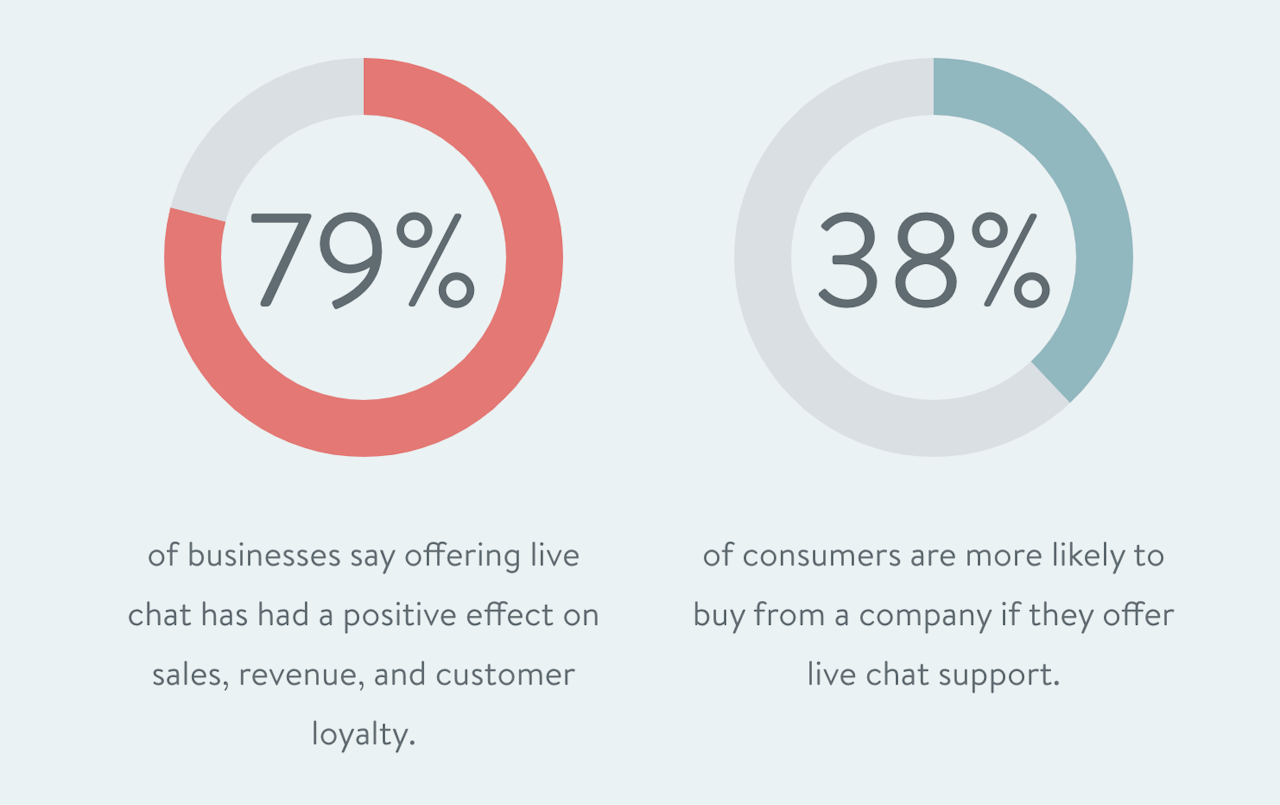
Loyalty and Rewards Program
Many organizations use their CRM to maintain a customer loyalty or rewards program. These are great for keeping first-time buyers coming back and increasing the value of existing accounts.
This kind of CRM strategy directs sales teams to offer personalized gifts, bonuses, discounts, or other perks for beginning or maintaining a buying relationship with your organization.
Multi-Channel Presence
Gone are the days when sales was either a phone or a door-to-door gig. Today’s buyer gets information from and makes decisions via a variety of channels. Sellers need to include each of these in their CRM strategy to ensure they’re reaching the broadest and most engaged audience possible.
It’s worth calling special attention to social media here. Social media influences over 70% of buying decisions. Make sure your organization’s social media presence is helping to drive sales by cleaning up and optimizing each of your profiles across the different platforms. Then, create a CRM strategy that incorporates a significant social media presence.
Do you use a specific CRM strategy? How did you create it? How has it improved your team’s performance?
Get sales tips and strategies delivered straight to your inbox.
Yesware will help you generate more sales right from your inbox. Try our Outlook add-on or Gmail Chrome extension for free, forever!
Related Articles
Casey O'Connor
Casey O'Connor
Casey O'Connor
Sales, deal management, and communication tips for your inbox

